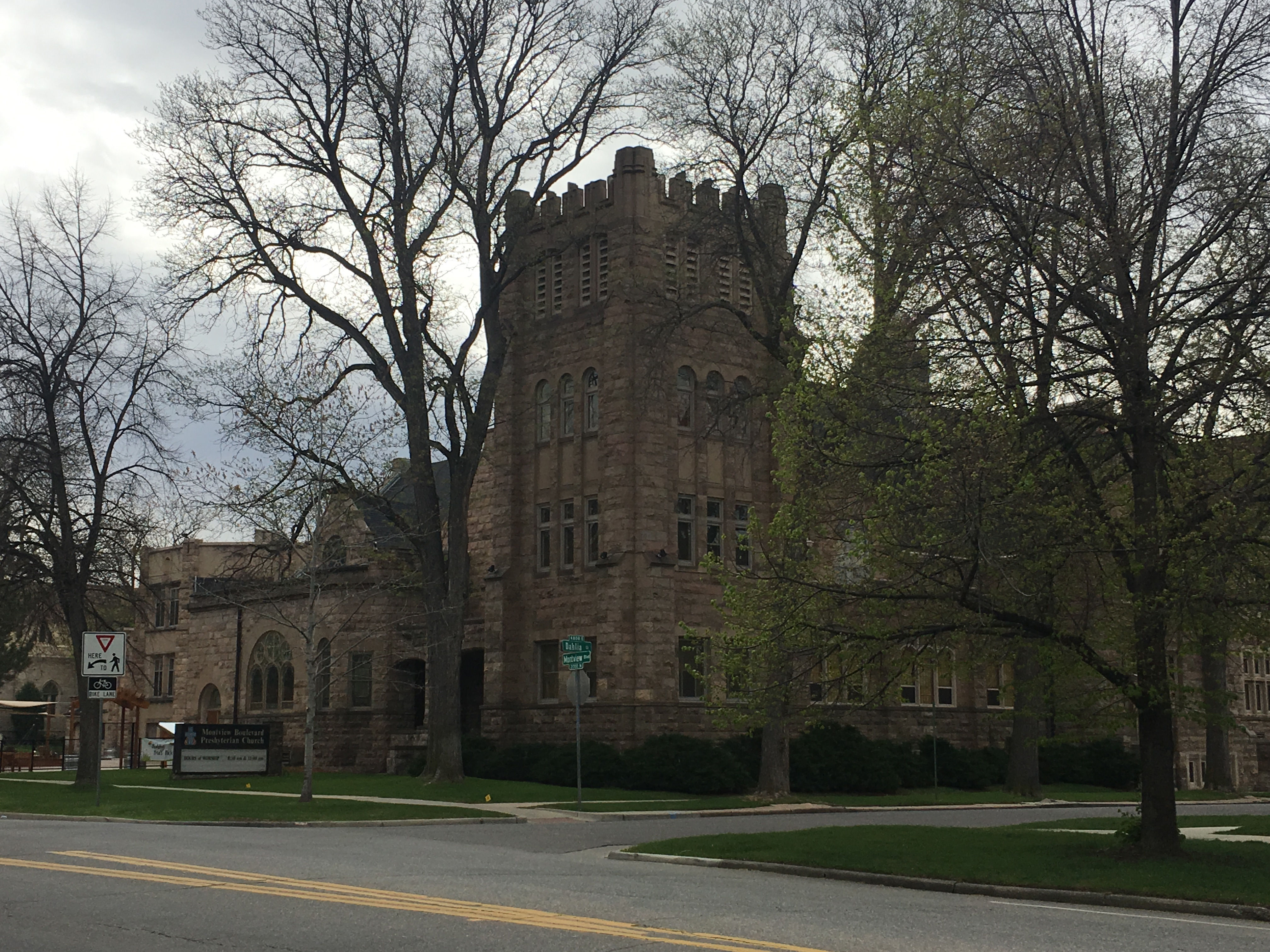National and State Register
Montview Boulevard Presbyterian Church
Denver County
Montview Boulevard Presbyterian Church is important for hosting a variety of social activities and for playing a key role in the establishment of the Park Hill Action Committee (PHAC), which worked to improve race relations in the 1960s. The amendment to the National Register listing further acknowledges Montview’s local significance in the areas of social and black history.
The 1910 church, with its multiple additions, stands as a well-preserved example of an early-twentieth-century urban neighborhood church executed in a Richardsonian Romanesque style. The church represents the work of four master architects of Denver. Harry J. Manning and Frank W. Frewen, partners in the firm Manning and Frewen, designed a Richardsonian Romanesque–style addition to the original tiny chapel in 1918. Burnham F. Hoyt and Merrill H. Hoyt, of the firm Hoyt and Hoyt, created the distinctive 1926 educational wing in the same style. The church added its sanctuary building in the late 1950s to accommodate a booming membership.
Since its congregants first met to worship in a cloth-ceilinged tabernacle in 1902, Montview has maintained a mission of community outreach that has positively influenced the neighborhood and city. By 1910 the church had a well-attended literary society championed by Montview member William Daniels of the Daniels and Fisher department store, whose iconic downtown clock tower is also listed in the National Register. By 1914 the church hosted the neighborhood’s first troop of Boy Scouts and, in the mid-1960s, Sunday school classes for the deaf. In the 1920s it helped build Presbyterian Hospital, and for decades it continued to provide volunteers and support. To supply seniors with affordable housing, Montview spearheaded the development of the high-rise Montview Manor just south of Denver’s City Park in the 1960s. In 1964 Bea Romer, daughter of then-pastor Dr. Arthur Miller, cofounded and then directed the integrated, multi-denominational preschool that still thrives in the church building. Romer later became Colorado’s first lady.
The year 1964 also saw what was perhaps the most significant event to take place at Montview. On Sunday, January 26, Dr. Martin Luther King, Jr. held a question and discussion session with Denver-area ministers at the church, followed by a larger meeting for the general public. Only about half of the approximately 3,000 people assembled at the church could fit in the building, so Dr. King spoke to the overflow crowd from Montview’s steps. He emphasized nonviolence to achieve racial equality and also stressed that “for democracy to live, segregation must die.” His speech at Montview represented the climax of a three-day tour that Dr. King took of Denver and helped to spread his message of nonviolence.
In addition to hosting such a historically significant figure in the civil rights movement, Montview played a central part in the formation and leadership of PHAC, whose mandate was to establish Park Hill as Denver’s first racially integrated community. The Denver Post in 1963 pointed to PHAC as an integration model for the rest of the city.
In the 1970s and ’80s, Montview saw changes in its leadership that reflected Denver’s increasing diversity. In 1971 Reverend John W. Rice became Montview’s first African American pastor; he served until 1974 while working at the University of Denver. Notably, he was the father of Condoleezza Rice, the nation’s first African American female secretary of state. In 1972 Montview’s first Asian American pastor, Dr. Allen Maruyama, began his twenty-year tenure. From 1980 to 2002, Dr. Glendora B. “Dusty” Taylor served as Montview’s first female pastor.
Through collective actions large and small, the people of Montview continue the work of ministering to the city’s spiritual and social needs. From its historic building, the church sustains its tradition of outreach, which has helped foster dialog, acceptance, and a spirit of caring among all neighbors.

